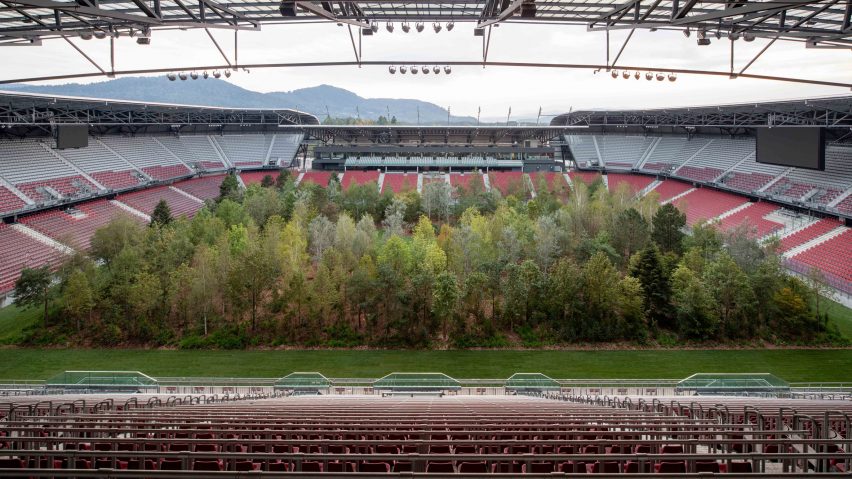
Klaus Littmann plants forest in Austrian football stadium
Swiss art curator Klaus Littmann has planted 300 trees in a football stadium in Austria as a "memorial" to the environment in the anthropocene era.
For Forest is replica of a European forest that has been transported to Wörthersee Stadion in Klagenfurt, where visitors can enjoy the spectacle of the leaves changing and falling during autumn.
The installation is Littmann's realisation of a dystopian vision of artist Max Peintner, who imagined a world where trees would only exist like species of animals in a zoo.
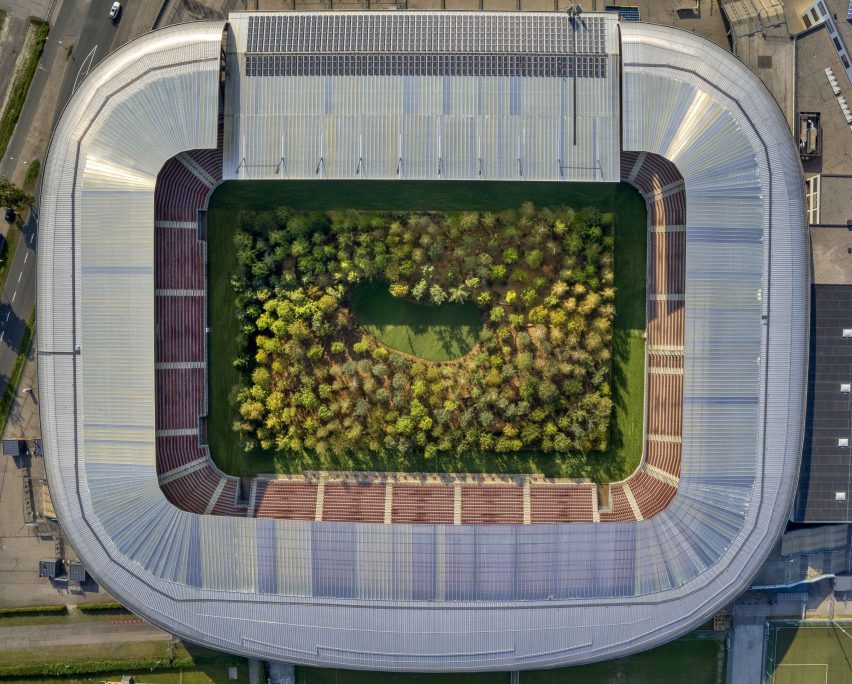
"For Forest is very timely as it coincides with growing global discussions and activism linked to deforestation and climate change," Littmann told Dezeen.
"Peintner drew The Unending Attraction of Nature in 1971. At the time, there was only little discussion about climate change and deforestation. I discovered the drawing in the 80s at an art exhibition," said Littmann.
"It took me nearly 30 years to realise this project but never has the timing of one of my projects been so spot on."
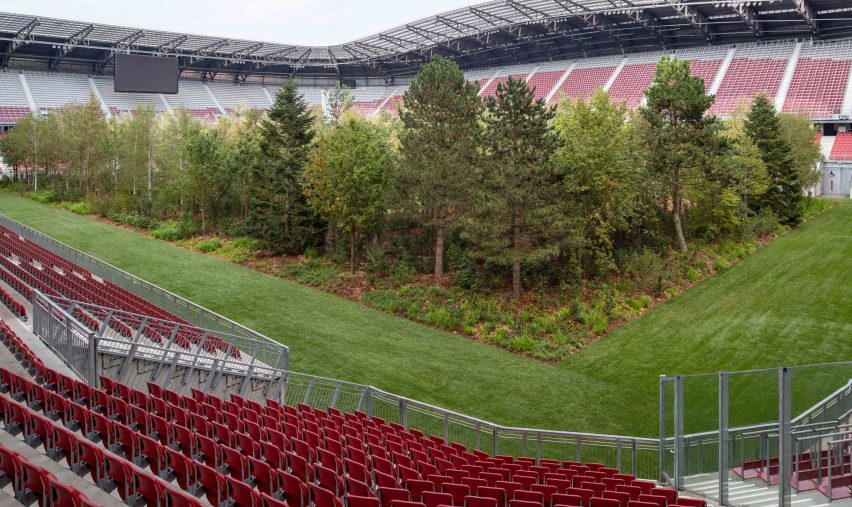
Trees are one of the defining symbols of the anthropocene era – the period where human activity is the biggest impact on the environment. Deforestation – whether to clear land for agriculture or industry or as the result of out of control wildfires such as those currently burning in the Amazon – is a key factor in the emergence of the anthropocene era.
A single Sitka spruce tree on Cambell Island in the Southern Ocean is regarded by scientists as the marker of the anthropocene's start.
Dubbed the world's loneliest tree, the tree's rings record the radiocarbon of above ground atomic bomb tests. The peak in 1965 is seen as the official start of the era of human impact dominating the environment.
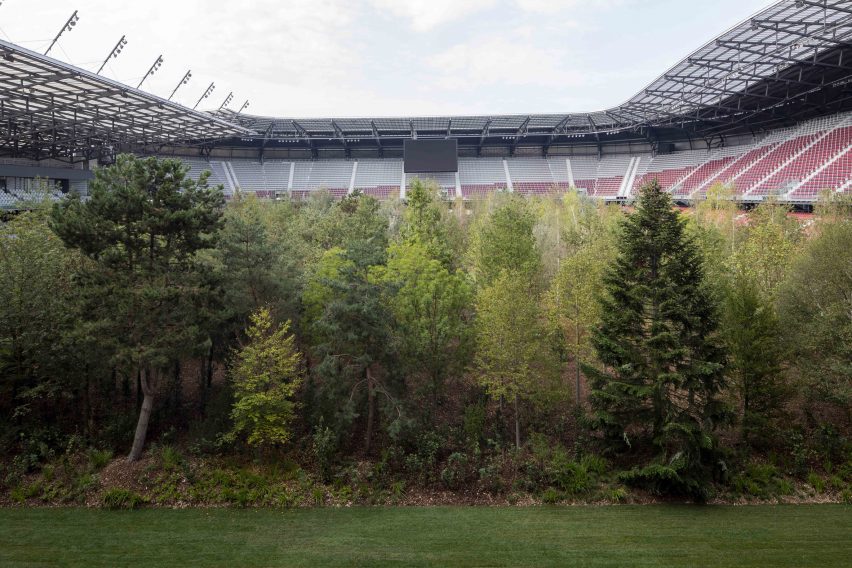
At For Forest, Littmann said he wants each visitor's experience of the stadium of trees to be personal. The trees are open to be interpreted as an artistic sculpture, or a philosophical symbol of life.
"With the discussions going on now, people can also see it as a memorial meant to bring people together to think about their environment and protect it."
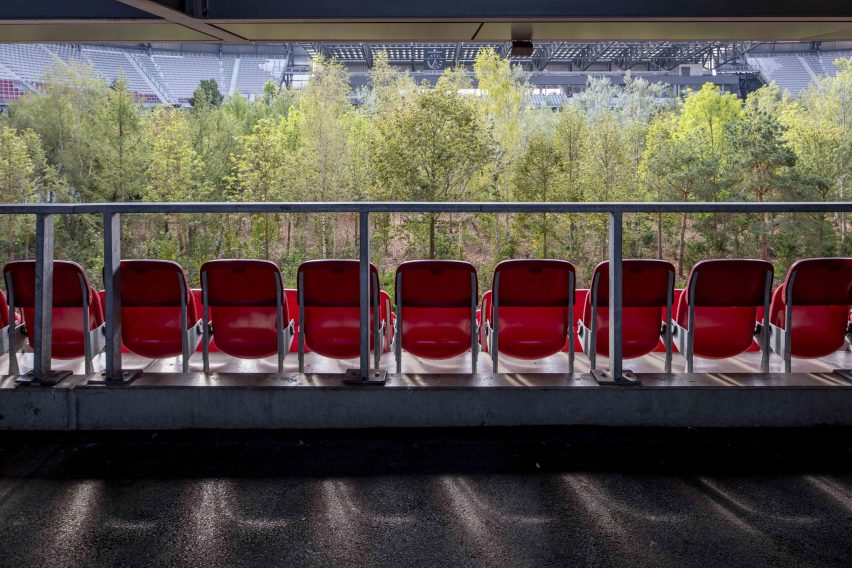
Putting trees in an unorthodox situation is intended as a challenge viewers perception. "People will not see trees or forests in the same way again," he said.
Planting 300 mature trees in a short window of time was a big undertaking. "The most challenging part of the project was its complexity," said Littmann. "The timing for setting up the temporary art intervention was crucial. We only had three weeks to set everything up."
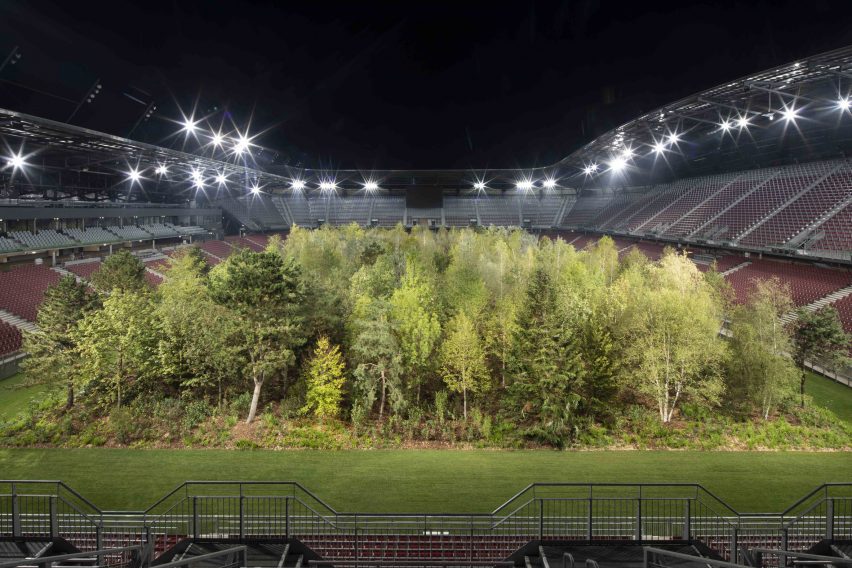
No animals or insect life will be added to the installation, but Littman said that he hopes "animals will find their way into the forest" during the time the artwork is in place.
For Forest will be open for viewing until 27 October, with floodlights turned on to light the trees after dark.
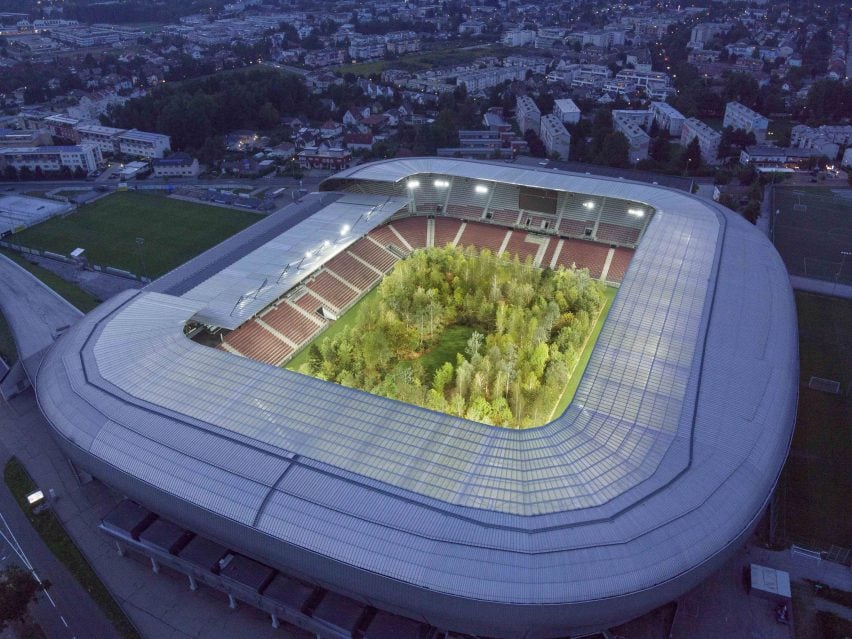
After the installation closes, the trees will be re-planted on a plot the same size close to the stadium, where they can develop. A wooden pavilion will be built alongside them to act as a education hub for future visitors and students.
"This way, the stadium forest will remain in memory as a forest sculpture," said Littman.
Several recent exhibitions and art shows are engaging with the themes of the anthropocene and climate change. British artist Alexandra Daisy Ginsberg's show at the Vitra Design Museum includes a new branch for the tree of life made from manmade organisms.
Photography is by Gerhard Maurer unless otherwise stated.